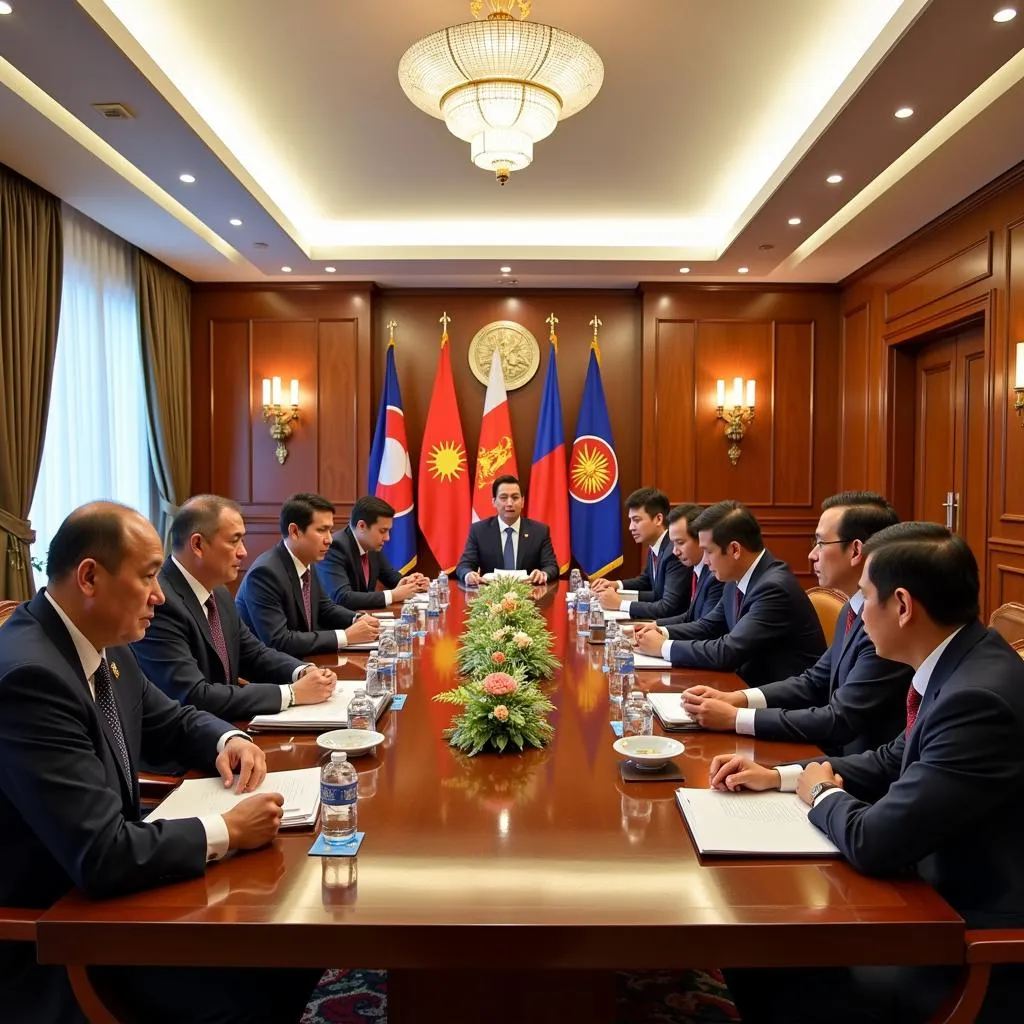The Association of Southeast Asian Nations (ASEAN) has consistently prioritized conflict prevention as a cornerstone of its regional integration efforts. Recognizing that peace and stability are prerequisites for economic growth and social progress, ASEAN has developed a multifaceted approach to address potential conflicts and maintain a harmonious regional environment.
ASEAN’s Foundational Principles: A Framework for Peace
At the heart of ASEAN’s conflict prevention mechanism lies a deep-rooted commitment to its founding principles. Enshrined in the 1967 Bangkok Declaration, these principles emphasize:
- Mutual respect for sovereignty and territorial integrity: Recognizing the inherent right of each nation to exist and govern itself without external interference.
- Non-interference in internal affairs: Refraining from intervening in the domestic matters of other member states.
- Peaceful settlement of disputes: Promoting dialogue and negotiation as the primary means of resolving disagreements.
- Renunciation of the threat or use of force: Rejecting the use of military force as a solution to regional issues.
These principles provide a framework for peaceful coexistence and cooperation, fostering an environment where potential conflicts are addressed through diplomacy and dialogue.
Proactive Diplomacy: Preventing Conflicts Before They Erupt
 ASEAN Diplomatic Meeting
ASEAN Diplomatic Meeting
ASEAN adopts a proactive approach to conflict prevention, focusing on addressing the root causes of potential disputes. This includes:
- Enhancing political and security cooperation: ASEAN member states engage in regular dialogues and consultations through platforms like the ASEAN Regional Forum (ARF) to discuss security challenges, build confidence, and promote transparency.
- Promoting economic integration: By fostering economic interdependence and shared prosperity through initiatives like the ASEAN Economic Community (AEC), ASEAN aims to reduce the likelihood of conflicts arising from economic disparities.
- Addressing transnational issues: Recognizing that issues like terrorism, natural disasters, and pandemics transcend national boundaries, ASEAN promotes collective action and information sharing to effectively address these challenges.
ASEAN’s Mechanisms for Conflict Resolution
While prevention remains paramount, ASEAN has also established mechanisms to manage and resolve disputes that may arise. These include:
- The Treaty of Amity and Cooperation in Southeast Asia (TAC): This treaty provides a legal framework for peaceful conflict resolution, binding member states to principles of non-aggression and peaceful settlement of disputes.
- The ASEAN Charter: Adopted in 2007, the Charter formalizes ASEAN’s legal personality and strengthens its institutional capacity to address regional challenges, including conflict resolution.
- The High Council: Established under the ASEAN Charter, the High Council is tasked with providing guidance and recommendations on critical issues, including those related to conflict prevention and resolution.
 ASEAN Mediation Efforts
ASEAN Mediation Efforts
Challenges and Opportunities: Navigating a Complex Regional Landscape
ASEAN’s conflict prevention efforts face various challenges, including:
- Diverse national interests: Balancing the diverse political systems, economic priorities, and security concerns of its member states can be a delicate balancing act.
- Territorial disputes: Overlapping claims in the South China Sea remain a potential flashpoint, requiring careful diplomacy and adherence to international law.
- Non-traditional security threats: ASEAN must adapt its conflict prevention mechanisms to address emerging threats like cybercrime, terrorism, and climate change.
Despite these challenges, ASEAN has achieved remarkable success in maintaining peace and stability in the region. Its commitment to dialogue, cooperation, and peaceful conflict resolution has created a unique model for regional integration and stands as a testament to the power of diplomacy in fostering a more secure and prosperous world.
Conclusion
ASEAN’s proactive approach to conflict prevention, grounded in its founding principles and supported by a robust framework of mechanisms, has been instrumental in maintaining peace and stability in Southeast Asia. As the region faces evolving security challenges, ASEAN’s commitment to dialogue, cooperation, and peaceful conflict resolution will continue to be crucial in shaping a future where nations coexist peacefully and work together towards shared prosperity.
FAQ
1. What is ASEAN’s primary approach to conflict prevention?
ASEAN prioritizes a proactive approach, addressing the root causes of potential conflicts through dialogue, economic cooperation, and addressing transnational issues.
2. What are some of the key mechanisms ASEAN uses for conflict resolution?
ASEAN utilizes mechanisms like the Treaty of Amity and Cooperation, the ASEAN Charter, and the High Council to facilitate peaceful resolution of disputes.
3. What are some of the challenges ASEAN faces in maintaining regional peace?
Challenges include balancing diverse national interests, managing territorial disputes, and addressing emerging non-traditional security threats.
Do you need support with ASEAN-related information?
Contact us:
Phone Number: 0369020373
Email: [email protected]
Address: Thon Ngoc Lien, Hiep Hoa, Bac Giang, Vietnam
Our customer service team is available 24/7 to assist you. You can also find more information on our website, including articles on ARF, ASEA, and 50 Facts about ASEAN.


